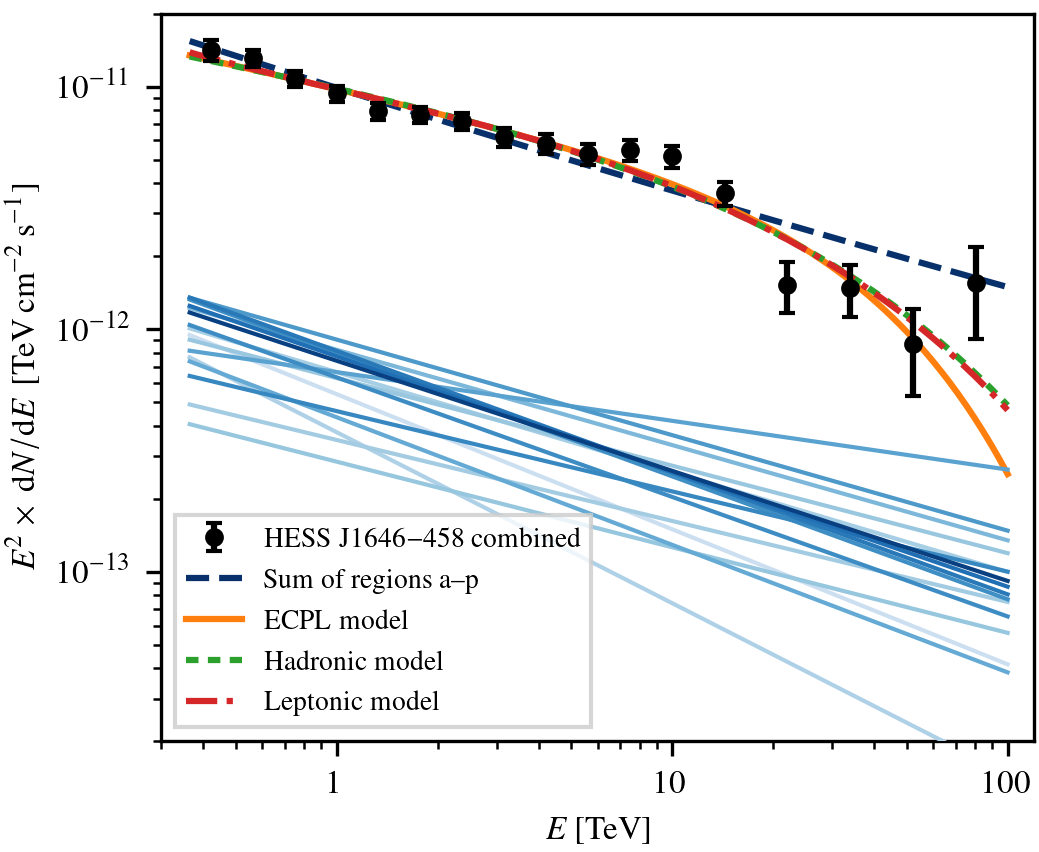Studying the massive star cluster Westerlund 1 with H.E.S.S.
Added: July 26, 2022.

Westerlund 1 is a star cluster in the Milky Way that has been discovered in 1961 by an astronomer called Bengt Westerlund. Today we know that it hosts a large number of extremely massive stars - in fact, Westerlund 1 is the most massive known young star cluster in our Galaxy. The image on the right shows the cluster in visible light and in X-rays.
At the end of their relatively short lives, massive stars “die” in powerful explosions called supernovae. It is quite likely that multiple supernovae have already happened in Westerlund 1 during its life time of a few million years. But even before they explode, massive stars generate powerful winds of particles, which may collide with each other or superimpose to form a collective cluster wind. Supernova explosions, colliding winds and the interaction of a collective cluster wind with the interstellar medium all lead to the formation of shock fronts - which in turn are ideal sites for the acceleration of charged particles, or cosmic rays. And because the acceleration of cosmic rays is almost inevitably accompanied with the production of high-energy gamma rays, massive star clusters are prime targets for gamma-ray telescopes such as the H.E.S.S. telescopes.
Indeed, the H.E.S.S. Collaboration has published a paper about Westerlund 1 in 2012, reporting about the detection of extended gamma-ray emission in the vicinity of the star cluster. Similarly, gamma-ray sources have been found also close to other star clusters in our Galaxy. However, it is unclear how (and where) exactly these star clusters accelerate cosmic rays, and by which mechanism the gamma rays are produced. H.E.S.S. has therefore performed deeper observations of Westerlund 1, resulting in a data set almost five times larger than that available for the 2012 paper. I have led the data analysis of this new data set, which has recently been published in Astronomy & Astrophysics.

The image on the left shows the high-energy gamma-ray flux measured with H.E.S.S. around Westerlund 1, which is marked by the black star. The emission region is extremely extended, about 100 pc across - the star cluster itself is only about 2 pc in diameter! Nevertheless, a careful investigation of the known objects in this region has lead us to conclude that only Westerlund 1 can realistically be made responsible for the gamma rays. Intriguingly, the gamma-ray emission seems to exhibit a shell-like structure that surrounds the star cluster - it is the first time that such a structure is observed around any star cluster. This could be an indication that the cosmic rays are accelerated outside of the cluster itself, for example at the “termination shock” of the collective cluster wind, where the pressure of the wind equals that of the interstellar medium. However, we cannot be sure about this, as also other explanations are compatible with our observations.

Another interesting outcome of the study is the energy spectrum of the emission around Westerlund 1, which is shown by the black points in the figure on the right. For the entire region, the spectrum of the gamma-ray emission extends to energies of almost 100 TeV, implying cosmic-ray energies well in excess of that. This again demonstrates that Westerlund 1 must be a very powerful cosmic-ray accelerator - for comparison, the most powerful man-made accelerator (the Large Hadron Collider at CERN) can accelerate protons to “only” 13 TeV.
The analysis has been featured in a H.E.S.S. Source of the Month article.
Paper reference: A&A 666, A124 (2022).
DOI: 10.1051/0004-6361/202244323
Pre-print: arXiv:2207.10921
Banner image credit: ESO/VPHAS+ Survey/N. Wright.
